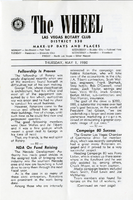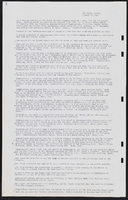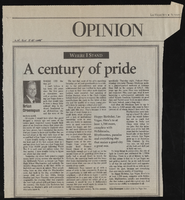Search the Special Collections and Archives Portal
Search Results

Meeting minutes for Consolidated Student Senate, University of Nevada, Las Vegas, July 20, 1976
Date
1976-07-26
Archival Collection
Description
Agenda and meeting minutes for the University of Nevada, Las Vegas Student Senate. CSUN Session 5 Meeting Minutes and Agendas.
Text

The Wheel Las Vegas Rotary Club newsletter, May 1, 1980
Date
1980-05-01
Archival Collection
Description
Newsletter issued by the Las Vegas Rotary Club
Text
Pagination
Refine my results
Content Type
Creator or Contributor
Subject
Archival Collection
Digital Project
Resource Type
Year
Material Type
Place
Language
Records Classification








